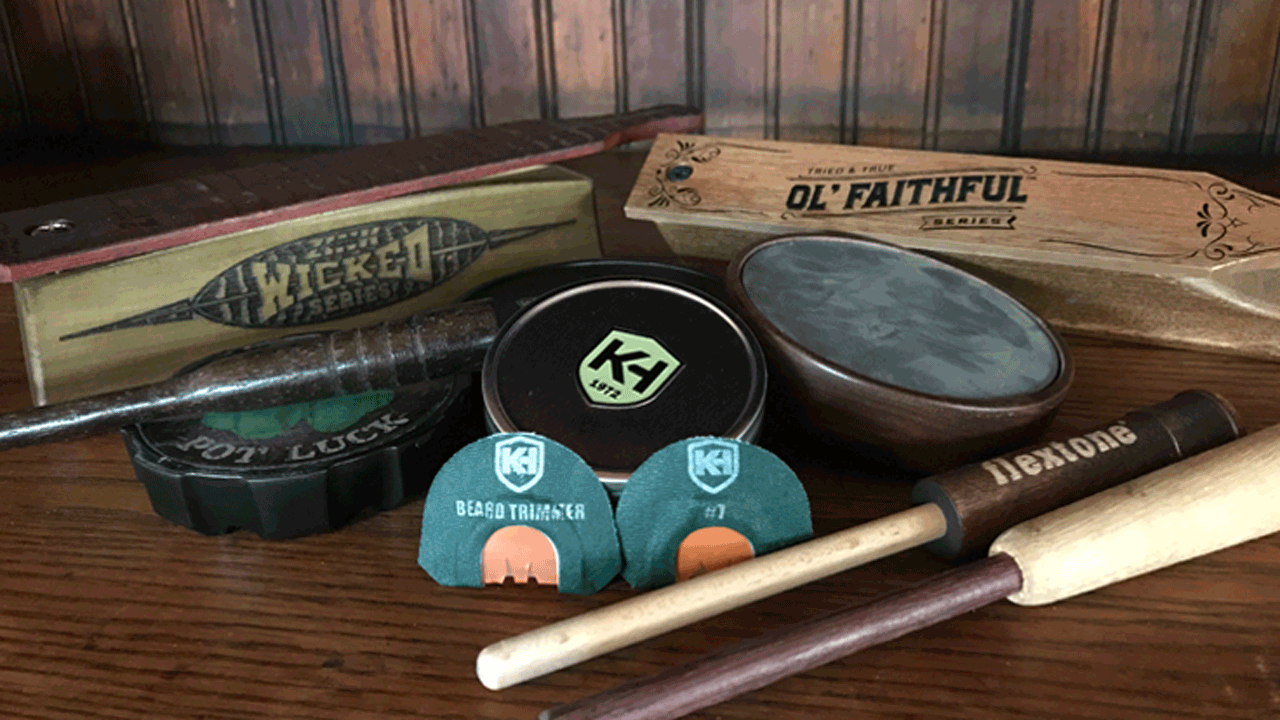
Turkey hunting is a popular sport that has been enjoyed by hunters for centuries. One of the most important tools in a turkey hunter’s arsenal is the turkey call. Turkey calls are used to mimic the sounds of a wild turkey in order to attract them. They come in various shapes, sizes, and types, and choosing the right call can be a bit overwhelming. In this article, we will be discussing some of the most popular turkey calls and what makes them unique.
A turkey call is a device or instrument used by hunters to mimic the sounds of a wild turkey. These calls are used to attract and lure the turkey within shooting range, allowing hunters to successfully bag their prey. The calls are typically made of various materials such as wood, slate, or rubber and come in different shapes and sizes.
Importance of Turkey Calls in Hunting
Turkey calls play a critical role in hunting wild turkeys. A successful turkey hunt requires the hunter to be able to accurately mimic the sounds of a wild turkey to attract their attention. These calls are used to imitate the sounds of a hen or gobbler, which will in turn draw the turkey to the hunter’s location. It is crucial to use the correct call for the situation and to use it correctly. A turkey hunter who understands the importance of turkey calls, the different types of calls, and how to use them correctly, has a better chance of success.
Overview of the Different Types of Turkey Calls
There are several different types of turkey calls that are used by hunters. These include box calls, slate calls, diaphragm calls, mouth calls, and pot calls. Each type of call has its own unique sound and is best suited for specific situations. Box calls are popular among hunters because they are easy to use and produce a loud, realistic sound. Slate calls are favored for their ability to produce a soft, seductive purr that mimics the sounds of a hen. Diaphragm calls are small, lightweight, and highly portable. They are made of rubber or latex and are inserted into the mouth to create the sounds of a turkey. Mouth calls are similar to diaphragm calls and require the user to control the sound with their mouth. Pot calls are versatile and can produce a wide range of sounds, making them a popular choice among hunters. To be a successful turkey hunter, it is important to understand the different types of turkey calls and know when to use each one.
Mouth Calls
How they work
Mouth calls, also known as diaphragm calls, are a type of turkey call that uses the hunter’s mouth to produce the desired turkey sounds. These calls are made of a thin, flexible piece of latex or silicone material that is placed in the hunter’s mouth and vibrated by air from the lungs to produce turkey calls. Mouth calls are a popular choice among hunters because they allow for hands-free operation, making them ideal for use while hunting with a firearm.
Popular brands
Some of the most popular brands of mouth calls include Primos, Knight & Hale, and WoodHaven. Each brand offers a variety of call designs and materials to choose from, allowing hunters to find the call that works best for them.
How to use them
Using a mouth call requires practice and proper technique to achieve the desired turkey sounds. Hunters start by placing the call in their mouth and vibrating their diaphragm to produce a cluck, yelp, or purr. The key to using mouth calls effectively is to produce consistent, realistic turkey sounds that mimic the calls of a wild turkey. Hunters should practice regularly to master their technique and perfect their calling abilities.
Box Calls
Box calls are a traditional and classic type of turkey call. They consist of a box-like chamber and a paddle that is used to strike the sides of the box to produce different sounds. The box is made of a variety of materials such as wood, acrylic, or metal, and the paddle can be made of wood or other materials. Box calls are versatile and can produce various sounds, making them a popular choice among hunters.
How to Use Box Calls:
Box calls are relatively easy to use and are a great choice for beginners. To use a box call, the hunter holds the box in one hand and uses the paddle to strike the sides of the box, producing the desired sound. The sounds produced by a box call can be adjusted by changing the speed, pressure, and angle of the paddle. To create a clucking sound, the hunter moves the paddle quickly across the sides of the box, while to produce a yelp, the hunter moves the paddle slower and with more pressure.
Best-Selling Box Calls:
Some of the best-selling box calls on the market include brands like Primos, WoodHaven, and Knight & Hale. These brands are known for producing high-quality, realistic sounds that attract turkeys, making them popular among hunters. Additionally, they offer different models, finishes, and styles to suit different hunters’ preferences and needs. Ultimately, choosing the best box call depends on personal preference and the specific needs of the hunter.
Slate Calls
Overview of slate calls
Slate calls are a type of turkey call that are made from a thin piece of slate material, typically mounted on a wooden or plastic box. These calls produce a high-pitched, sharp sound, which makes them a popular choice for many turkey hunters. The sound is created by friction between the slate surface and a wooden striker, which is used to create the sounds of a turkey hen.
How to use slate calls
To use a slate call, hunters must first select the call they want to use and determine the type of sound they want to make. Next, they must find the right spot on the slate call to make the desired sound, and then use the striker to create the sound by rubbing it back and forth against the slate. Hunters must also practice their calling techniques to perfect their skills, so they can produce the right sounds to attract turkeys.
Best-selling slate calls
There are many popular slate calls on the market, but some of the best-selling brands include Primos, Knight & Hale, and H.S. Strut. These brands offer a range of slate calls with different types of sounds and designs, allowing hunters to choose the call that is best suited to their needs. Whether you’re looking for a high-pitched yelp or a soft, coaxing purr, you’re sure to find a slate call that will suit your needs.
The Art of Calling
Understanding turkey language:
To be successful at turkey hunting, it’s essential to understand the language of the wild turkey. Turkeys use different calls to communicate with each other and express their emotions. By understanding these calls, hunters can use them to attract or lure turkeys into their hunting area.
Calls and their meanings:
There are several different calls that turkeys use, including clucks, yelps, purrs, cuts, and cackles. Each call has a specific meaning and purpose, such as a cluck being used to signal feeding time, or a yelp being used to signal a hen looking for a mate. It’s important for hunters to know when and how to use each call to effectively mimic the turkey’s natural language.
How and when to use different calls:
The timing and frequency of turkey calls are critical factors in attracting turkeys. Hunters should call often in the early morning and evening, but decrease the frequency as the day progresses. Experimentation with different calls and timing can help hunters find what works best for them and their hunting area. A versatile and realistic call that can imitate multiple turkey sounds can increase the chances of success.
In conclusion, turkey calls are a crucial tool for any turkey hunter. From box calls to mouth calls, each type of call offers different sounds and benefits. It’s important to understand the differences between calls and to know when to use each one. With practice and experience, hunters can master the art of turkey calling and increase their chances of success in the field. Whether you are a seasoned veteran or just starting out, there is a turkey call out there that is perfect for you.



